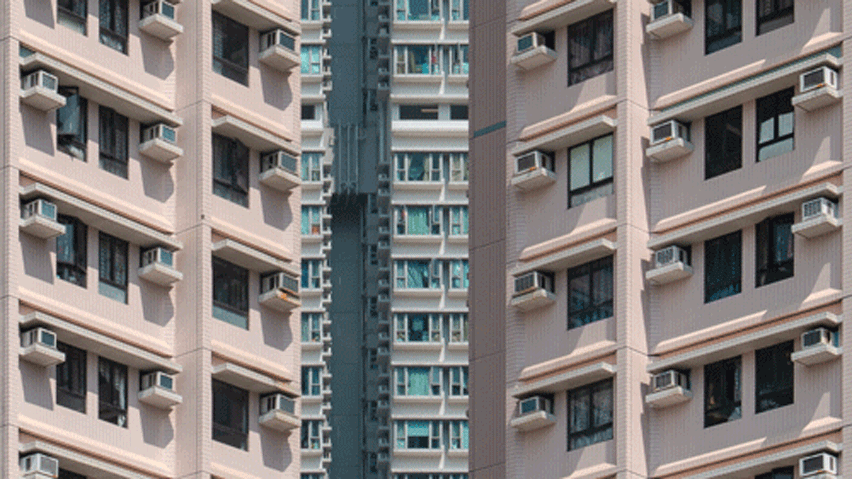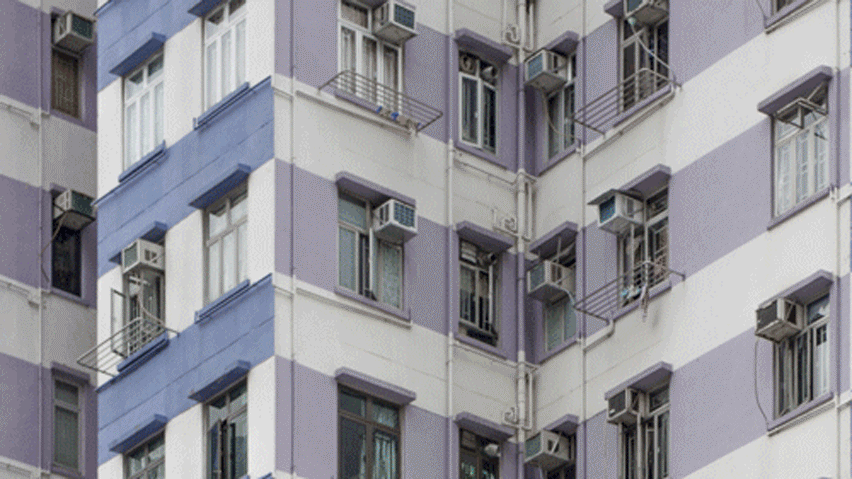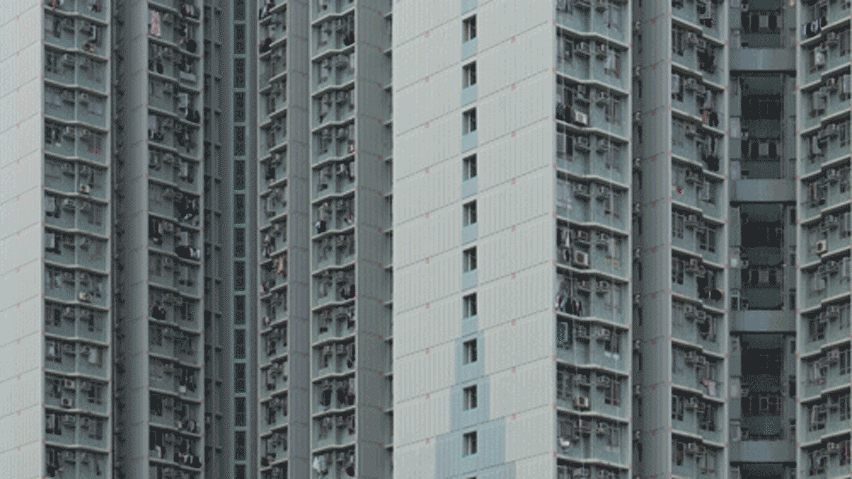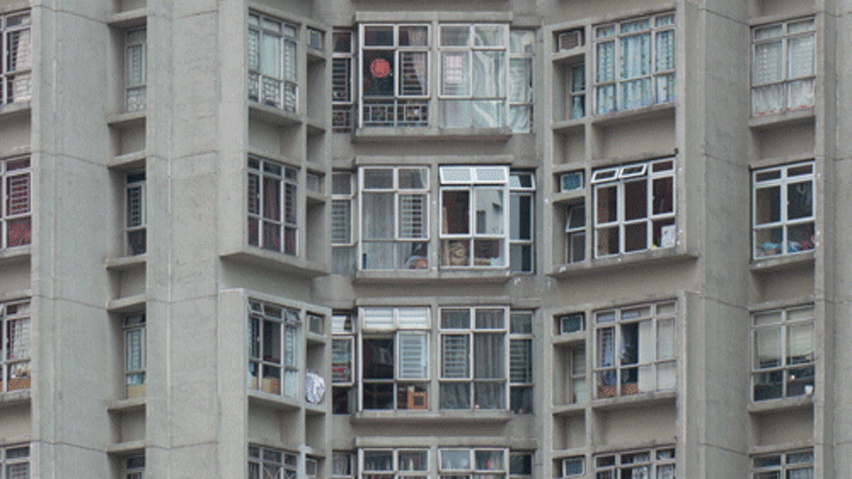
Max Hattler turns Hong Kong's high-rise housing into repetitive animations
Director Max Hattler has turned a series of photos of housing estates in Hong Kong into repetitive animations to create his film Serial Parallels.
Hattler created the film to draw attention to the density and repetitiveness of the numerous housing blocks on Hong Kong Island, the Kowloon Peninsula and in the New Territories.
"What struck me most about Hong Kong when I first moved there was the extreme density and verticality of the urban landscape," Hattler told Dezeen.
"Blocks of high-rise housing estates are often built so closely together that there is literally no horizon visible anymore," he continued.
"This has been well documented by photography, most notably by the late Michael Wolf in his Architecture of Density series. I wanted to give an impression of these more extreme parts of the cityscape that exist everywhere all across Hong Kong, but in a time-based medium."

The nine-minute film was made from 240 photographs of building facades taken across the city, which Hattler combined into a series of animations over nine months.
"While photography is ideal to convey a sense of scale, it is through film that more narrative and playful elements can be incorporated," he explained.
"Re-animating photographs allowed for the buildings themselves to come alive in front of the viewer, and become the protagonists of the film. Through this animation approach, the cityscape is reimagined as a living machine, a machine for living, and also a space which is all-encompassing and cannot be escaped."

Serial Parallels formed the centrepiece of an exhibition called Receptive Rhythms, which took place at Hong Kong's Goethe-Gallery earlier this year. It is now being shown at film festivals.
Hattler hopes the animated buildings will allow viewers to see the city in a different way. He also created the animations and the film to be a criticism of the housing situation in the city.
"I think Serial Parallels can be read on different levels," said Hattler. "For a western audience used to flatter, more expansive cities, the film might seem like a Matrix-esque nightmare scenario of the future, yet a future present, one that already exists."
"While for Hong Kongers, the film might be read a bit differently, more on the level of a re-appreciation of the built environment, a re-visiting through alienation, through abstraction," he continued.

"But on one level the film is of course a critique of housing policies which shackle the city's inhabitants. Hong Kong has the highest housing prices on the planet, so for many obtaining a tiny, subsidised public housing apartment is the greatest blessing, while it also means they might never be able to afford to move house again," he continued.
"Serial Parallels tries to capture this oppressive state, while at the same time celebrating the colours and patterns of this unique urban environment."
Earlier this year another director, Rafał Barnaś, used digital animation to create an "abstract world built out of paper" for film ArchiPaper.